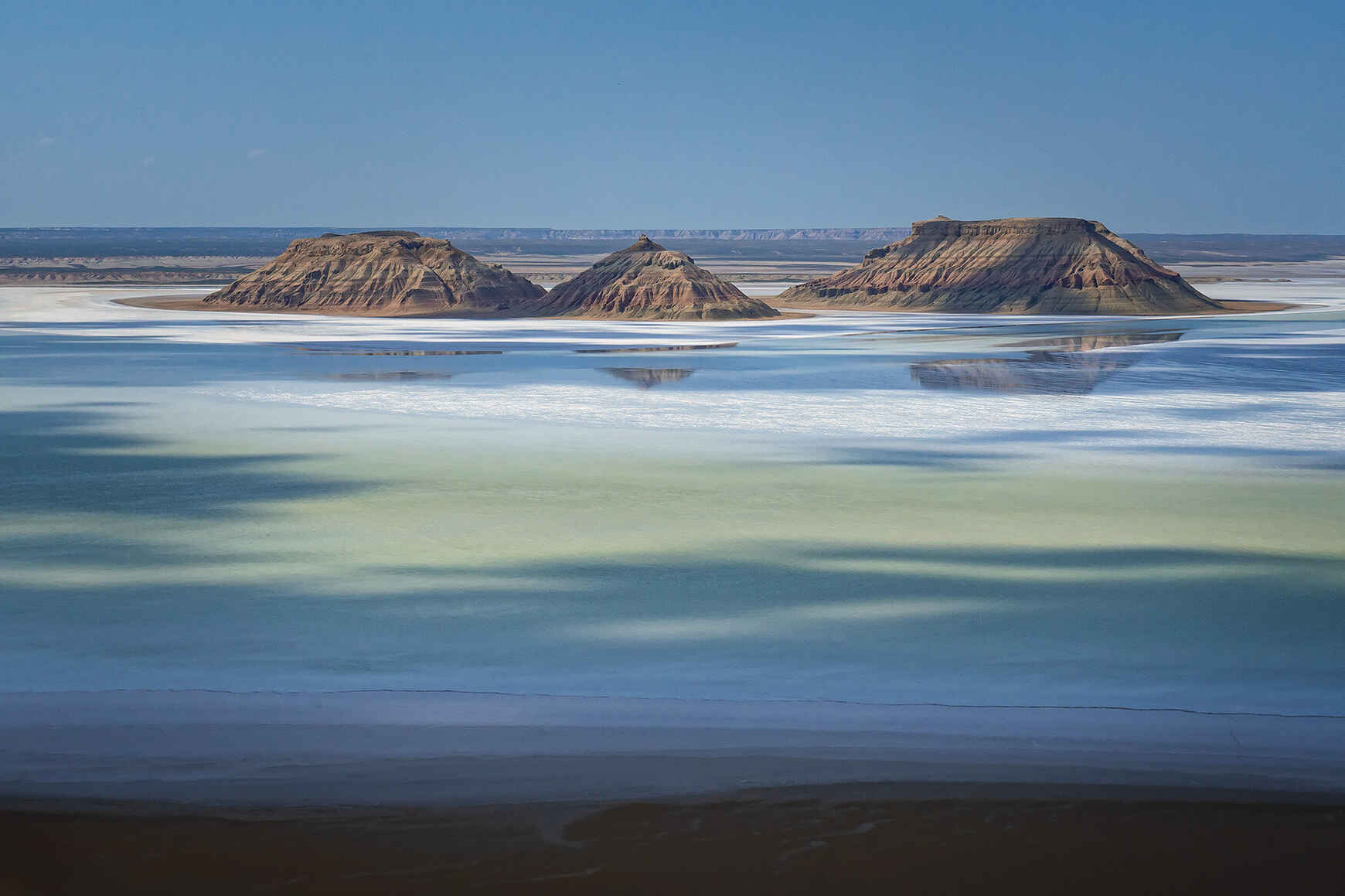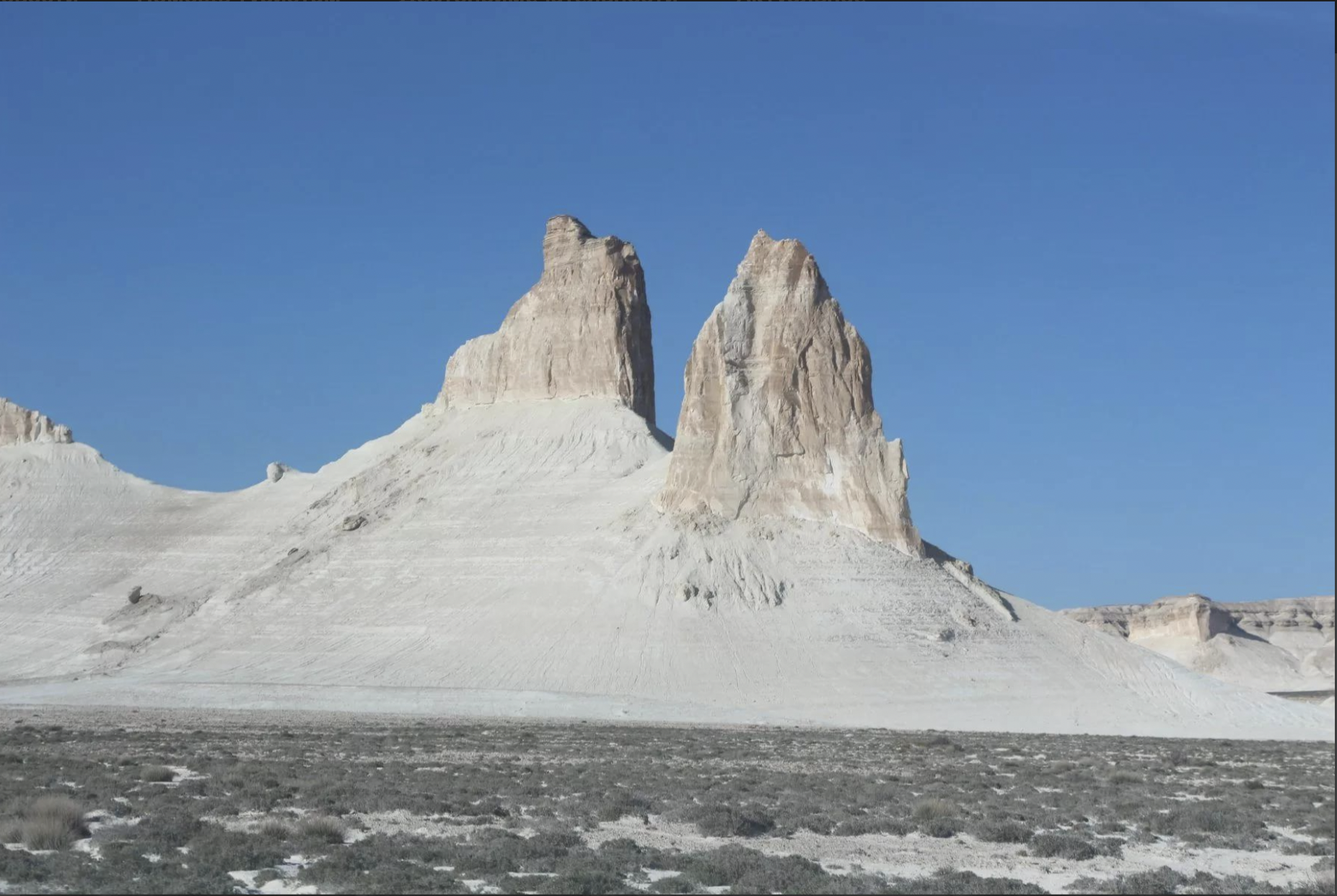ASTANA – The Mangystau Region in western Kazakhstan with its picturesque valleys and landscapes that look so alien, one would think you were on Mars, attracted over half a million tourists over the last two years, reported the region’s Center for Public Communications (CPC).
According to the CPC, in the next three years, the region plans to implement 15 projects worth 100 billion tenge (US$209 million).
If one wants to get off the beaten track of luxury tours to experience pristine authentic nature without human intervention, then Mangystau landscapes are the place to go.
Most tours to the Mangystau Region involve jeep itineraries that bounce from one beauty spot to the next, overnighting in tents at locations. As a bonus, there is still a possibility to meet endangered animals like gazelles, vultures, and falcons.
Karynzharyk hollow
The high-speed spacecraft trip from planet Earth to Mars takes up to seven months. From Astana’s international airport you will be able to fly to Kazakh Martian landscapes in just three hours: first to Aktau, and from there take a ride to the hollow 350-370 kilometers away from the city.

During the rains in Karynzharyk, the entire hollow is covered by a thin layer of water that reflects the mountains and sunlight. Photo credit: Viktor Bashkir, tourister.ru.
Karynzharyk hollow is based in the Ustyurt National Reserve of the Mangystau Region in southwest Kazakhstan. The territory of the reserve complex is 223,342 hectares, which is home to rare species of flora and fauna.
Famous for its unique sand and clay, Karynzharyk hollow astonishes its visitors and gives them a feel as if they are on another planet. There is practically no wind there, so all is silent which gives one a feeling of oneness in that enormous space.
From higher ground, a magnificent view opens up to the territory of Karynzharyk: the remnant mountains look absolutely stunning against the background of the milky-white plateau.
The mountains in the center of this natural site are always different depending on the time of day, how the sunlight falls, the overhanging clouds, and the water glaze during the rains.
During the rains in Karynzharyk, the entire hollow is covered by a thin layer of water that reflects the mountains and sunlight. Solonchak surface, which is an accumulated salt that has been lying here for hundreds of years, holds all the water above, preventing it from penetrating deep into the ground. After rainfall in the hot season, the water dries out completely and becomes the cracked surface of Karynzharyk.
Bozzhyra tract
The Bozzhyra tract, located in the western part of the Ustyurt plateau around 300 kilometers from Aktau, offers the chance to slow down and appreciate the present moment surrounded by magnificent scenery.

Bozzhyra tract. Photo credit: visitmangystau.kz.
This is a landscape of a vast desert of limestone sediments, ornamental rocks, and canyons over 200 meters high that arose on the site of the ancient Tethys ocean, as evidenced by the numerous petrified remains of sea urchins and extinct mollusks.
A car will deposit you on a remote, sun-drenched meadow with two bone-white mountains reminding of fangs and a vast alley dissolving to the horizon.
Bozzhyra is one of the best places in Kazakhstan to connect with traditional legends and stories of the country. Local community-run businesses offer guided cultural experiences, such as visits to Beket Ata, Shakpak Ata, and Sultan Upi underground mosques.
Torysh – the valley of spheres
Torysh, deservedly named the valley of spheres, is the most mysterious sight of the Mangystau Region, as no one, including scientists, could give an explanation as to how in the middle of the vast steppe stones of clear round shape appeared.

Torysh, deservedly named the valley of spheres. Photo credit: visitmangystau.kz.
Located 100 kilometers from Aktau, the valley is covered with sun-bleached round-shaped stones that resemble dinosaur eggs that have been in the steppes for thousands of years.
There are several versions of the origin of the valley of balls. One assumption is that the spheres appeared as a result of electrical discharges in the Earth’s crust, which occurred in areas of active tectonic faults. As the rocks rotated in the fault, they formed into spherical nodules.
The ball was formed on the principle of a snowball: a small grain was fostered by a thick layer of sand and clay. It is projected that the processes took place at a time when there were still bodies of water in place, as the core of the ball consists of the remains of small organisms that lived in the sea. Imprints of insects, barnacles, and fish can still be seen today.
Locals have their own stories about the origin of the Torysh ball valley. According to one of them, God turned their former enemies into stones after accepting the pleas of the local people.
An interesting fact is that the balls, when interacting with the winds of Mangistau, reproduce sounds similar to the howls of wild animals.


